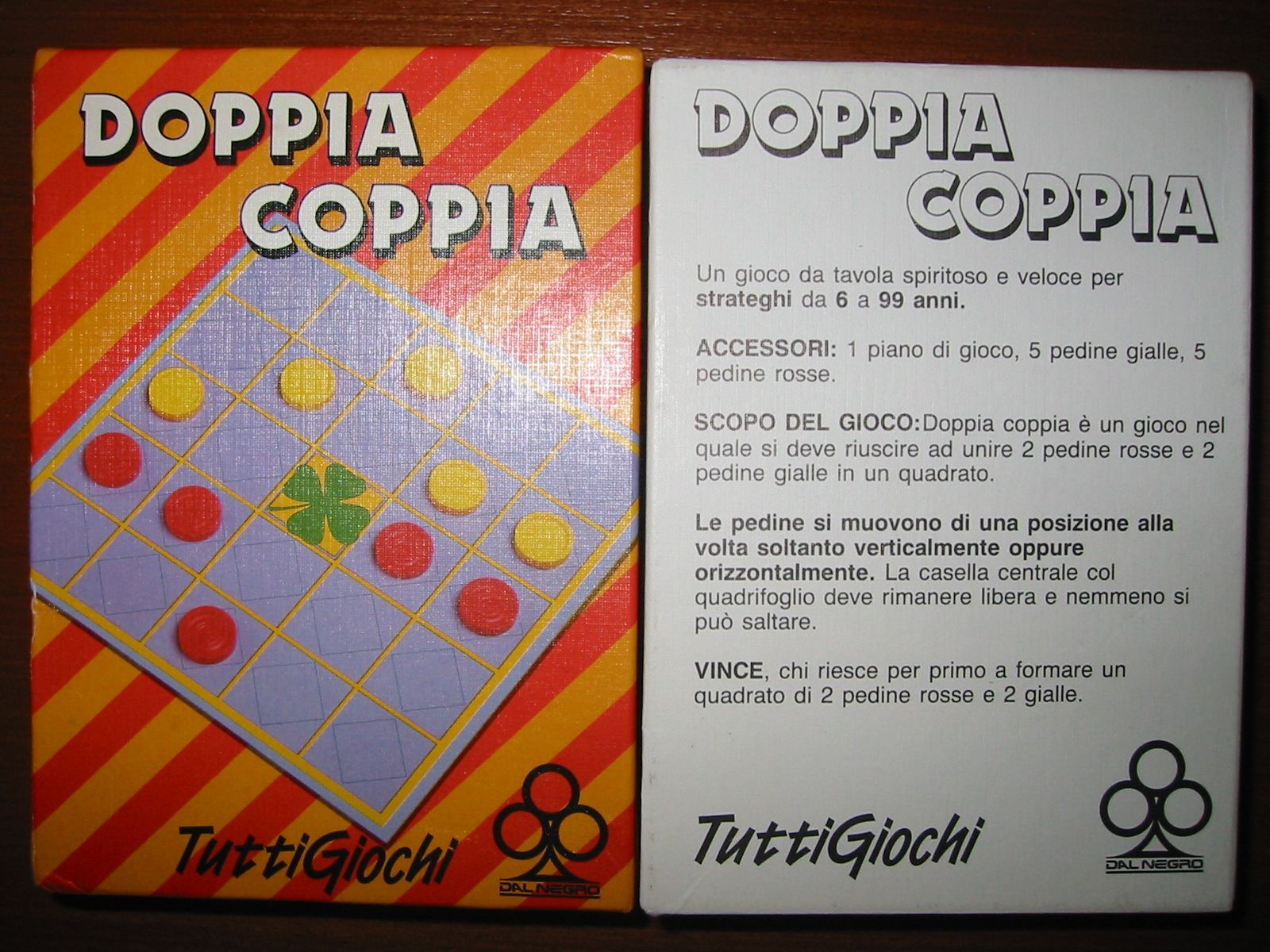
Doppia Coppia (1986)
2 - 2 persone
10 - 10 min
6+
Al momento questo prodotto non è disponibile presso nessun venditore.
Nomi alternativi: Doppel-Hochzeit, Doppia Coppia
Editori: Dal Negro, F.X. Schmid
Descrizione: Doppia Coppia appears to be a game in a series, TuttiGiochi, published by Dal Negro. The 1987 F. X. Schmid copyright implies it may have been publisehd by that company too. Other games in the TuttiGiochi series (listed in the rules leaflet) are 'Micio-Gatto', 'Gioco Dei Nomi', 'Roulette Scozzese', 'La Torre Di Babele' and 'Sole, Luna E Stelle'.
Doppia Coppia means 'two pairs' in Italian, and reflects the objective of the game - to form a square using two pairs of pieces in two different colours. This simple abstract game for two players consists of a 5-by-5 square board, 5 red pieces and 5 yellow pieces. Pieces of the same colour start in a row at opposite ends of the board and players take turns to move a piece of their colour one square at a time orthogonally. A piece may also jump over one other piece as a move. The central square on the board is occupied by a four-leaf clover and pieces may not enter this square nor jump over it. A player wins when he or she makes a move that completes a square (I interpret this to be a 2-by-2 square) containing 2 red and 2 yellow pieces (the two colours may be side-by-side or crossing diagonally).
Doppia Coppia means 'two pairs' in Italian, and reflects the objective of the game - to form a square using two pairs of pieces in two different colours. This simple abstract game for two players consists of a 5-by-5 square board, 5 red pieces and 5 yellow pieces. Pieces of the same colour start in a row at opposite ends of the board and players take turns to move a piece of their colour one square at a time orthogonally. A piece may also jump over one other piece as a move. The central square on the board is occupied by a four-leaf clover and pieces may not enter this square nor jump over it. A player wins when he or she makes a move that completes a square (I interpret this to be a 2-by-2 square) containing 2 red and 2 yellow pieces (the two colours may be side-by-side or crossing diagonally).
